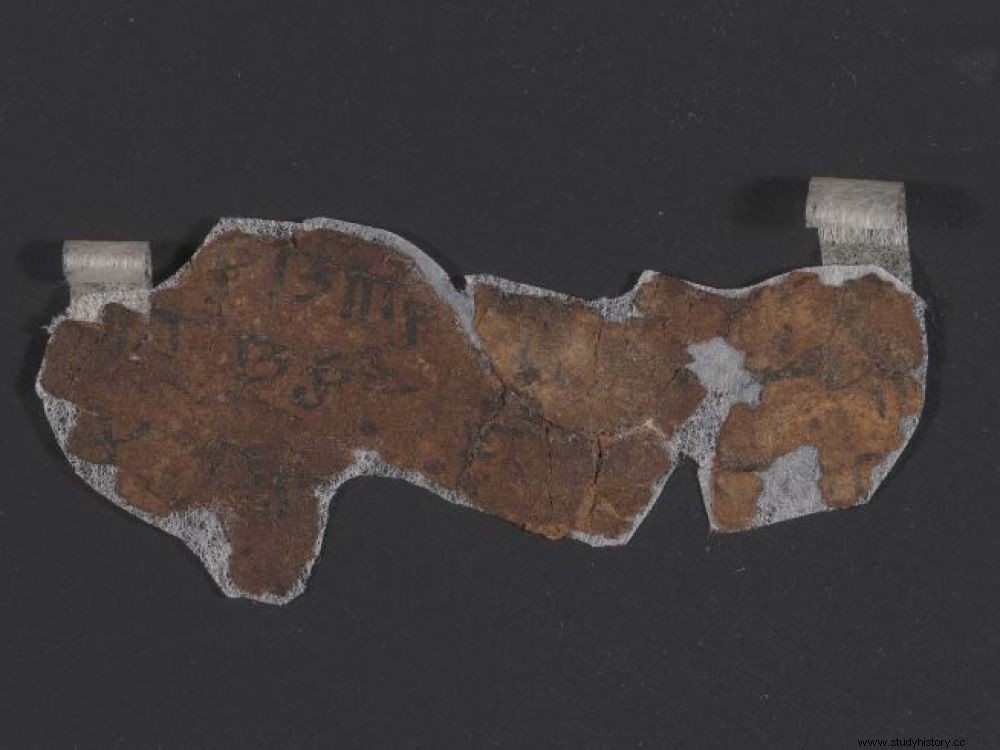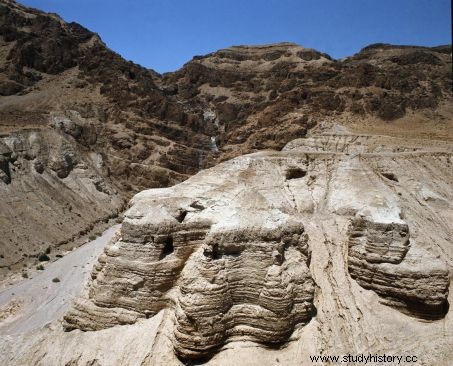Two researchers would have succeeded in unraveling the mystery of one of the last two unpublished manuscripts of Qumran. This would be a unique calendar used by the Essenes.

One of the fragments of the manuscript from the caves of Qumran recently decoded at the University of Haifa (Israel).
These tiny calligraphic fragments, 2000 years old, belong to the famous Dead Sea Scrolls, these scrolls found between 1947 and 1956 in the Judean Desert and the caves of Qumran (West Bank). They were among the last undeciphered to date according to the Journal of Biblical Literature . But two scientists from the Department of Biblical Studies at the University of Haifa (Israel) have just solved the mystery! They have indeed succeeded in translating this puzzle of about sixty splinters attributed to the Essenes, a sect belonging to a radical current of Judaism which appeared in the II th century before our era (read box ). "In these small fragments, some of which barely reach 1cm 2 , Eshbal Ratzon and Jonathan Ben-Dov managed to identify a 364-day lunar calendar written in encrypted form", explains paleographer Michael Langlois, a specialist in Dead Sea manuscripts at the University of Strasbourg (Grand Est). According to this expert, joined by Sciences et Avenir , the researchers first repositioned the fragments and deciphered the notes present in the margins. They thus managed to identify a calendar text related to an already known document, the "Astronomical Book of Enoch", named after a patriarch mentioned in the Bible and whom the sacred text places between Adam and Noah.
The 2 Israeli specialists will try to decipher the very last Dead Sea Scroll not yet deciphered
Why create a 364-day calendar when the rest of the Jewish community then operated with a precise 365-day calendar? "By choosing to divide the year into 52 weeks of 7 days, the Essenes wanted to synchronize the cycle of the sun and the moon so that their most important annual and ritual festivals always fall on the same day of the year, as detailed in this scroll. There were also particular days marking the transition between the four seasons. The description of these last fragments of the Dead Sea allows us to discover the denomination of one of them, " Tekufah"". With this immutable calendar - which also indicates other celebrations unknown to the Bible - every 1 st day of the year always coincided with the same day of the week, as did each important religious holiday in Judaism (Shabbat, Easter, etc.). But over the centuries, significant discrepancies have appeared. Consequence:the seasons were no longer in sync.
"The Essenes, convinced of the validity of their calendar, deduced that the universe was out of order, that things were going from bad to worse. Criticizing the priests of the Temple of Jerusalem who used a 365-day calendar, they ended up adopting an apocalyptic view of the world" , adds Michael Langlois. This Essene calendar demonstrates the character of identity underlying these calendar choices. The two Israeli specialists will now try to decipher the very last Dead Sea Scroll not yet deciphered...
Views of the caves of Qumran, on the Dead Sea, where the famous manuscripts were discovered. © Leemage/AFP
The Dead Sea Scrolls
The Dead Sea Scrolls are the name given to secular and religious papyri and scrolls written in Hebrew, Greek, and Aramaic unearthed in the Judean Desert between 1947 and 1956. Consisting of scrolls and thousands of fragments from 900 manuscripts, these 2,000-year-old remains have been attributed to the Essenes, a Jewish sect of ascetic hermits settled in "Khirbet Qumran" , a dozen kilometers south of Jericho, in the West Bank. These precious documents, a quarter of which are unpublished Hebrew Bibles, are considered one of the greatest archaeological discoveries of the 20th century. Found by Bedouins in 11 caves near the Dead Sea, these remains remain a source of fascination. In 2012, the discovery of a 12th cave was announced. A blank scroll was found there. Since 2016, the Israel Antiquities Service has resumed the systematic exploration of all the caves in the Judean Desert, in order to ensure that they did not contain other manuscripts. (To find out more read "Sciences et Avenir" n°839, January 2017 ).

